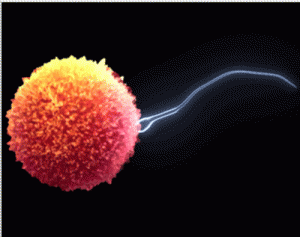The One Way Street Called Sperm Donation
 Creating children with sperm donation has gone on for a long time. In fact, the first documented case of a woman becoming pregnant by donor insemination was in 1884.
Creating children with sperm donation has gone on for a long time. In fact, the first documented case of a woman becoming pregnant by donor insemination was in 1884.
A Quaker woman and her merchant husband, not able to conceive, approached Dr. William Pancoast of Jefferson Medical College in Philadelphia. When Dr. Pancoast presented this couple’s case to his medical students, one of the students suggested:
… that semen should be collected from the “best looking” member of the class, and used to inseminate the woman. Dr. Pancoast agreed to the experiment. Without informing either the woman or her husband of his intentions, he called the merchants wife back under the pretense of doing another examination. The woman was anesthetized, and the procedure was carried out. It wasn’t until it became evident that the woman had actually conceived that her husband was informed.
The woman was never told what was done to her. It seems somethings never change. Today’s billion dollar fertility industry regularly uses woman desperate for children as guinea pigs for whatever new procedure a doctor can think up.
Over a century later, the practice has become even more bizarre and convoluted. Last week I stumbled upon this piece at the New Republic by Stephanie Fairyington. Stephanie fell in love with her lesbian partner Sabrina, and they were married. Visiting Sabrina’s newborn niece, Del, brought out something unexpected in Stephanie:
Del planted an impossible desire in me: She made me want to corporealize my love for Sabrina, to create a biological record—a baby—of the fact that we were here and we loved one another.
Unable to conceive on their own, they needed sperm, but not just any sperm donor would do. For both women to have a biological connection to the “corporealization of their love,” a relation would have to provide the sperm. So Stephanie asked her brother to be their donor.
The rest of the piece devolves into narcissism where Stephanie admits she enjoyed the shock value:
The queer parts of me relished the way it unsettled people. Uprooting convention, collapsing categories, reframing and reassigning blood relations was a subversive wet dream.
There was some reason peeking through the clouded haze of self-interest when Stephanie imagines the questions she will get from the clinic:
I imagined her questions floating through her mind like bold-lettered crawl at the bottom of a TV screen: “So, your brother would be the child’s father and uncle?” “Isn’t this weirdly incestuous since your brother would be breeding with his sister-in-law, your wife?” “What will your brother tell his two sons, that they have a new half-sibling or cousin?” “Wait, you’d be the child’s aunt and mother?”
Stephanie then lays out the “plan.” Her brother will just be an uncle. They will tell the child that Uncle Nick just “helped.”
Turns out that the donation could not move forward and Stephanie and Sabrina are resorting to an anonymous donor. But Stephanie ends with this:
I still can’t adequately express the sadness I continue to feel when I realize that I’ll never look at a baby born of both of us. Instead, I will be looking at half of a man I don’t know, a stranger. I wish I could say that I’ve evolved from the selfish, animal longing to forge a bloodline with Sabrina, but I’m not there yet.
And there is the point. Stephanie still longs for a biological connection to her child. She acknowledges her desire to know, love and be loved by her biological offspring, one that shares a genetic connection to both her and Sabrina.
Why is it she is so quick to dismiss the same need in her future child? Will her child not also yearn to be known and loved by his or her biological parents? Will that desire not be even stronger and more primal than hers?
If the donation of her brother had gone forward, Nick would have been the child’s biological father, but she was ready to relegate him to just “uncle” status. And now with an anonymous donor the child will never know half of their biological story.
Why is it that society is so quick to acknowledge and support the parents’ desire to have biologically-related children, but then turn around and totally disregard the same need for children to be known and loved by both of their biological parents?
It is a one way street with parents running over the needs of their own children.
The Church, thankfully, is a rare voice for those children. The Catechism states:
Techniques that entail the dissociation of husband and wife, by the intrusion of a person other than the couple (donation of sperm or ovum, surrogate uterus), are gravely immoral. These techniques (heterologous artificial insemination and fertilization) infringe the child’s right to be born of a father and mother known to him and bound to each other by marriage.
This reproductive one-way street must change direction. It is time for a major traffic revision where the flow is in favor of the needs of the children.

